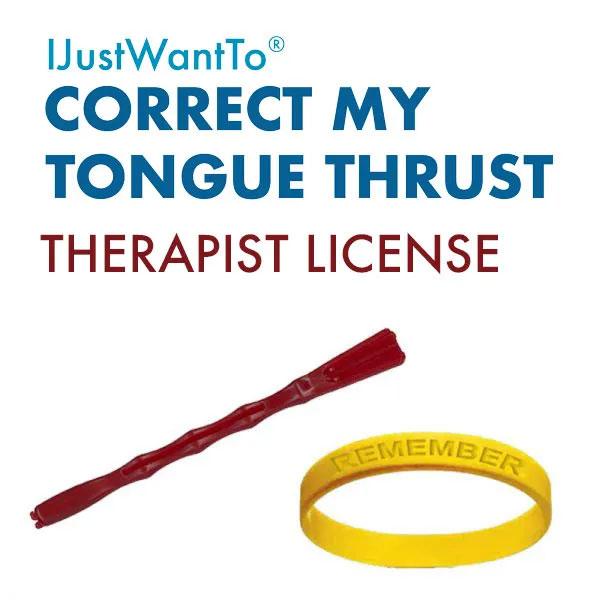What do the other techniques try to accomplish?
1. Positional Therapy Stop Snoring Techniques
Try to find a way for you to position your body (for example: sew a tennis ball to the back of your night shirt so you are unable to sleep on your back) so your tongue won’t fall down and block your airway and so that your lips will stay closed.
What we know
With tongue exercises, you can train your tongue and lips to rest in the proper place, regardless of whether you sleep on your back, side, or belly, and not snore.
2. Behavioral Therapy Stop Snoring Techniques
Encourage changes that will help you breathe better through your nose and reduce muscle relaxation that may narrow the airway.
What we know
Nose breathing is preferred and specific tongue/lip exercises are required to withstand any increased muscle control changes that will prevent your tongue from blocking the airway. The exercises in this program are a variety of tongue exercises that are used specifically in speech therapy, which was discovered to help stop snoring. Behavioral therapists are not trained to perform exercises necessary for changing any part of the mouth.
3. Nonsurgical Therapy Stop Snoring Techniques
Move your tongue forward so it won’t block the airway: (variety of oral appliances)
Nonsurgical examples
A. Nasal support devices attempt to open nasal passages (Breathe Right Strips, Mute)
Opening nasal passages are the most important first step to sleeping better but do nothing to change what is going on inside the mouth (it doesn’t prohibit the tongue from blocking the airway).
B. Forced air devices (CPAP machine)
The CPAP machine can accomplish keeping your airway open only if it is adjusted properly and worn consistently. It may require that the tongue stays on the bottom of the mouth instead of on the roof of the mouth. It also often encourages an open mouth posture which is counterproductive to learning how to nose breathe.
C. Other devices (special pillows, dental bites, chin straps) attempt to physically correct an anatomical problem
If you pull your tongue forward, then it will not be able to “live” on the roof of the mouth, preventing the tongue from being properly positioned to swallow saliva, food, and liquid. Pulling your tongue forward will certainly keep the tongue from blocking the airway, however, it will not help you to learn to swallow correctly and encourages mouth breathing. Side effects that may occur include mouth dryness, tooth discomfort, and TMJ.
4. Surgical Stop Snoring Procedures
Reduce or reshape the soft palate to prevent airway blockage (UPPP & LAUP):
What we know
If the tongue can be trained to “live” on the roof of the mouth by performing simple tongue exercises, then why would you prefer surgery that will shorten or remove the uvula, which is extremely painful and rarely helps?
Surgical examples
A. Stiffen the palate to prevent movement (Injection Snoreplasty/Pillar Procedure, Radio frequency treatment, Laser surgery)
If your uvula is so long that it rests on the top of the back of the tongue, surgery may be the first (but not only) choice of treatment. There is still the need to train your tongue to “live” on the roof of your mouth and to learn to nose breathe, which are both made a habit with the exercises in the IJustWantTo Correct My Tongue Thrust program.
B. Suspend the tongue with a screw to prevent it from blocking the airway (Repose)
Screwing your tongue to anything is just not right when you can naturally train it with tongue exercises to not block the airway. It is not painful and a lot more affordable.
C. Remove tonsils and adenoids
Removing tonsils and adenoids that are enlarged and invading the space meant for the tongue is the very FIRST method of treatment. Often, the tongue, since being pushed forward by the tonsils and adenoids, can result in the tongue protruding from the mouth while resting and then tongue exercises are recommended to form a new habit and train the tongue to live on the roof to help you stop snoring.
Why should I consider the IJustWantTo Correct My Tongue Thrust stop snoring program?
The only two physical problems that have not responded well to this program is: 1. an unusually small airway, and 2. consistent nasal congestion. Mandibular advancement surgery has a 90% success rate in increasing the size of the airway. After surgery, however, the IJustWantTo Correct My Tongue Thrust program is recommended to train your tongue to “live” on the roof of your mouth and to train you to habitually nose breathe to stop snoring.
No drugs, No appliances, No machines
IJustWantTo COrrect My Tongue Thrust does not require that one reduce stress, lose weight, or stop drinking. While these can be necessary health changes, they may take a long time to accomplish, and sleep is needed now.
94% Stop Snoring Success Rate
IJustWantTo Correct My Tongue Thrust is easy, harmless, inexpensive, and can change the way you sleep in as little as seven weeks, if not sooner. Imagine waking up and feeling truly refreshed!



